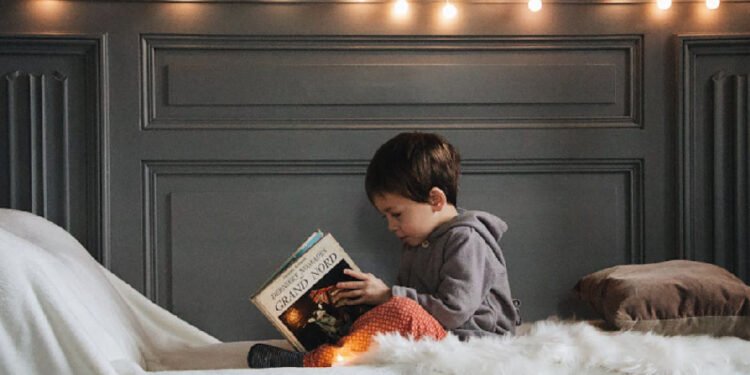Transitioning a child from a crib to a kid’s bed is an important milestone that can bring excitement but also anxiety for many parents. It’s a step toward independence, yet the timing and process can be confusing. Sleep quality is crucial to a child’s development, and making the transition too early or too late can have consequences.
This article will guide you through the process of when and how to make the switch, offering practical advice to make the transition as smooth as possible for both you and your child.
When is the Right Time to Transition to a Bed?
There isn’t a one-size-fits-all answer to when you should move your child from a crib to a bigger bed. Most children transition between the ages of 18 months and 3 years old. However, it’s less about age and more about readiness. Some signs that your child might be ready include frequently climbing out of the crib, showing interest in beds, or outgrowing the crib’s size.
One key factor to consider is your child’s physical development. If they’re climbing out of the crib, it may be time to make the switch for safety reasons. Conversely, if your child seems perfectly content and secure in their crib, there’s no harm in waiting a little longer.
Choosing the Right Bed for Your Little One
Selecting the perfect bed is critical for your child’s comfort and safety. Parents can choose between various options such as toddler beds, twin beds, or full-sized single beds. Many parents opt for toddler beds initially, as they are smaller and often come with built-in safety rails. However, if you want to avoid having to purchase another bed a few years down the line, going straight for a standard single bed is a more practical investment.
Moreover, investing in a quality mattress is one of the most important steps in ensuring your child’s comfort during this transition. As children grow, their sleep needs evolve, and a well-made single mattress can support their development by providing the right balance of comfort and support. One excellent option to consider is the Panda London Hybrid Bamboo Mattress Pro. This mattress is designed with six layers of innovative sleep technology that combine nature and science for optimal comfort. Its bamboo-infused open-cell memory foam is both antibacterial and thermoregulating, ensuring breathability and airflow throughout the night. Mattresses don’t just last through kids’ childhood but are also large enough for growing bodies, allowing them to stretch out comfortably.
Setting Up a Safe Sleep Environment
Safety should always be a top priority when transitioning to a kid’s bed. One of the most important things to consider is the layout of the room. Make sure the bed is positioned away from windows, cords, or any sharp objects that could pose a risk. In the UK, many parents find bed rails to be an essential addition for children who are still learning how to navigate their new sleeping space.
Childproofing the rest of the room is equally important. Ensure that heavy furniture is anchored to the walls to prevent accidents, and consider using soft corner protectors on furniture edges. Additionally, make sure that any toys or small objects that could be choking hazards are kept out of the bed.
This combination of a comfortable mattress, safe bed, and childproof room will give both you and your child peace of mind during this transition.
How to Keep Your Child in Bed Throughout the Night
One of the most common challenges parents face after transitioning to a kid’s bed is keeping their child in bed all night. With newfound freedom, many children may get out of bed repeatedly, testing the boundaries set by their parents. Establishing a consistent bedtime routine is crucial in helping your child understand that getting out of bed is not an option.
In most households, bedtime routines often involve a calm, structured process such as reading a book, taking a bath, and dimming the lights to signal that it’s time for sleep. If your child gets out of bed, calmly return them without engaging too much. This teaches them that bedtime means staying in bed, even if they wake up during the night. It’s also a good idea to limit screen time and stimulating activities in the hour leading up to bedtime, as these can make it harder for children to settle.
Managing Nighttime Fears and Sleep Disruptions
It’s common for children to experience nighttime fears or disturbances when transitioning to a new bed. For some, the open space of a bigger bed can feel less secure than the confines of a crib, leading to fear of the dark or even nightmares. Addressing these fears early on can help your child feel more comfortable and settled.
Incorporating comfort items, such as a favourite blanket or stuffed toy, can provide a sense of security. A nightlight is another great tool to soothe fears of the dark, particularly in the UK, where longer winter nights can make bedtime feel more daunting. If your child is waking up frequently, try to understand whether they’re feeling anxious or simply adjusting to the new environment. Gentle reassurance, paired with consistency in your bedtime routine, will help them adjust in time.
Make the Bed Inviting with Fun and Cosy Accessories
Making the new bed feel like a special, inviting space is key to helping your child embrace the transition. One way to do this is by letting your child pick out new bedding or sleep accessories, which can make the bed feel more personalised and exciting. There are plenty of options available in the UK, from bedding sets featuring their favourite characters to high-quality blankets and pillows that are soft and comforting.
Another approach is to add cosy touches such as throw blankets or decorative cushions. These not only make the bed more appealing but also provide extra comfort during cold UK winters. Creating a space that your child looks forward to sleeping in will encourage them to stay in bed longer and make the transition feel like a positive step toward independence.
Moving from a crib to a kid’s bed is a significant milestone, but with careful planning and a little patience, it doesn’t have to be a difficult one. By considering your child’s readiness, preparing them mentally for the change, and choosing a comfortable and safe bed, you can make this transition easier for both you and your child. Establishing a consistent bedtime routine, addressing any nighttime fears, and making the bed an inviting space are all key steps in ensuring a successful move to a bigger bed. And if challenges arise, don’t hesitate to seek professional advice—there are plenty of resources in the UK to support parents through this process. With the right approach, transitioning to a kid’s bed can be a smooth and rewarding experience for your family.











